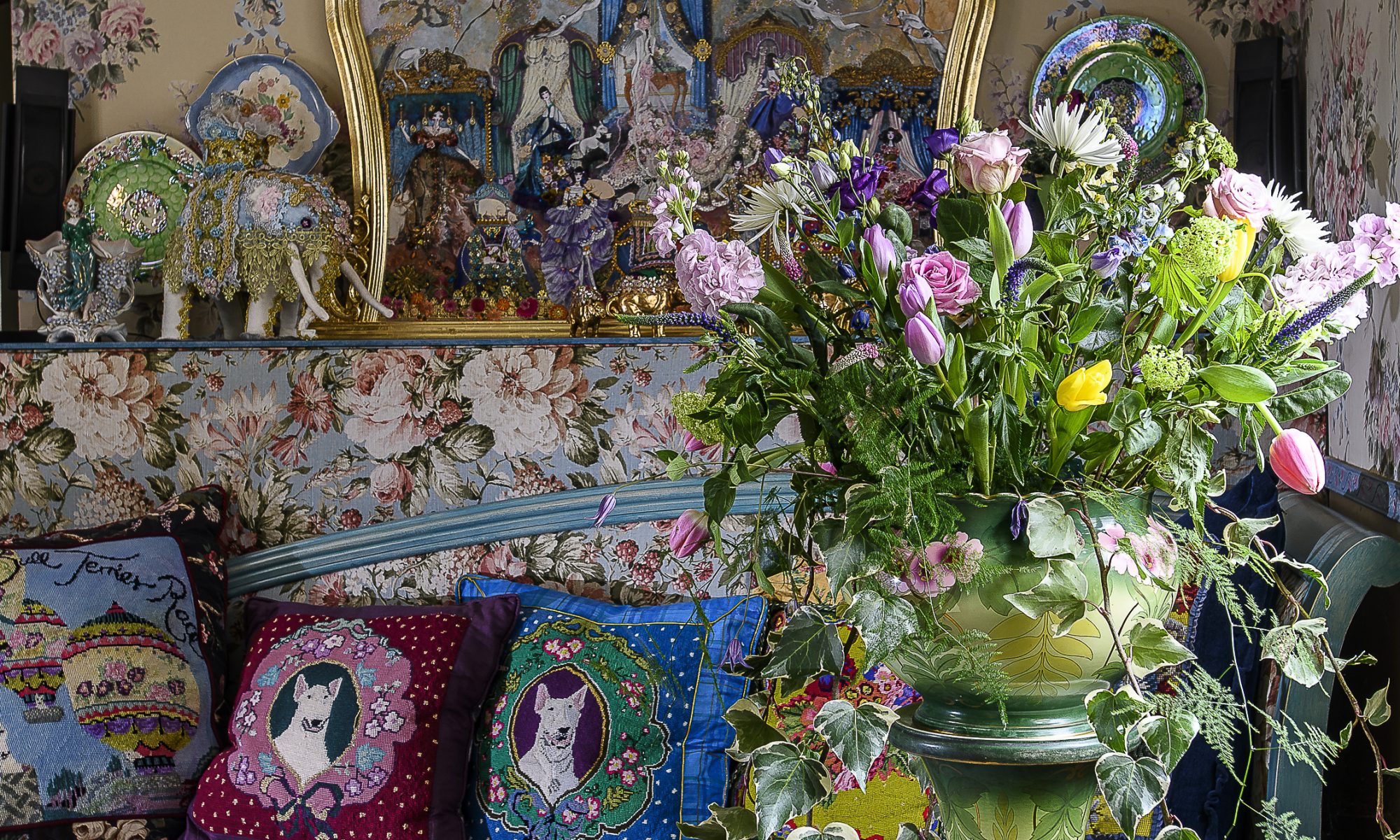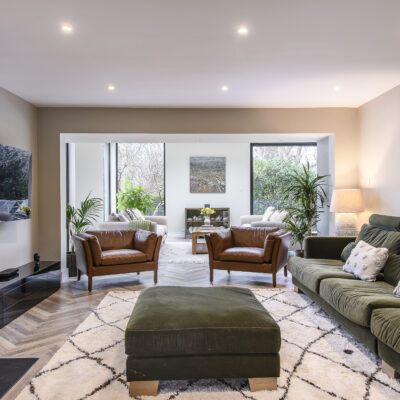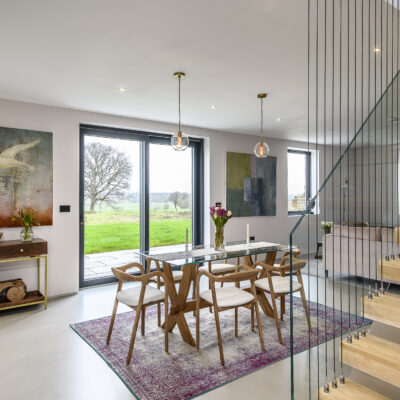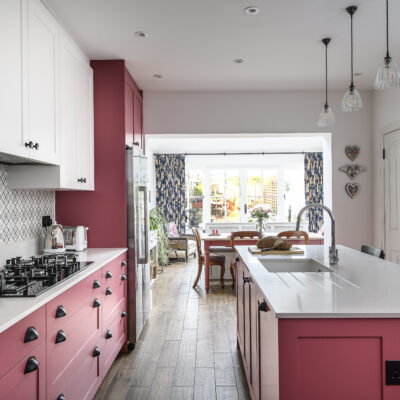Artist and designer Louise Hamlin-Wright’s vibrant home is a wonderful riot of colour, pattern and craft
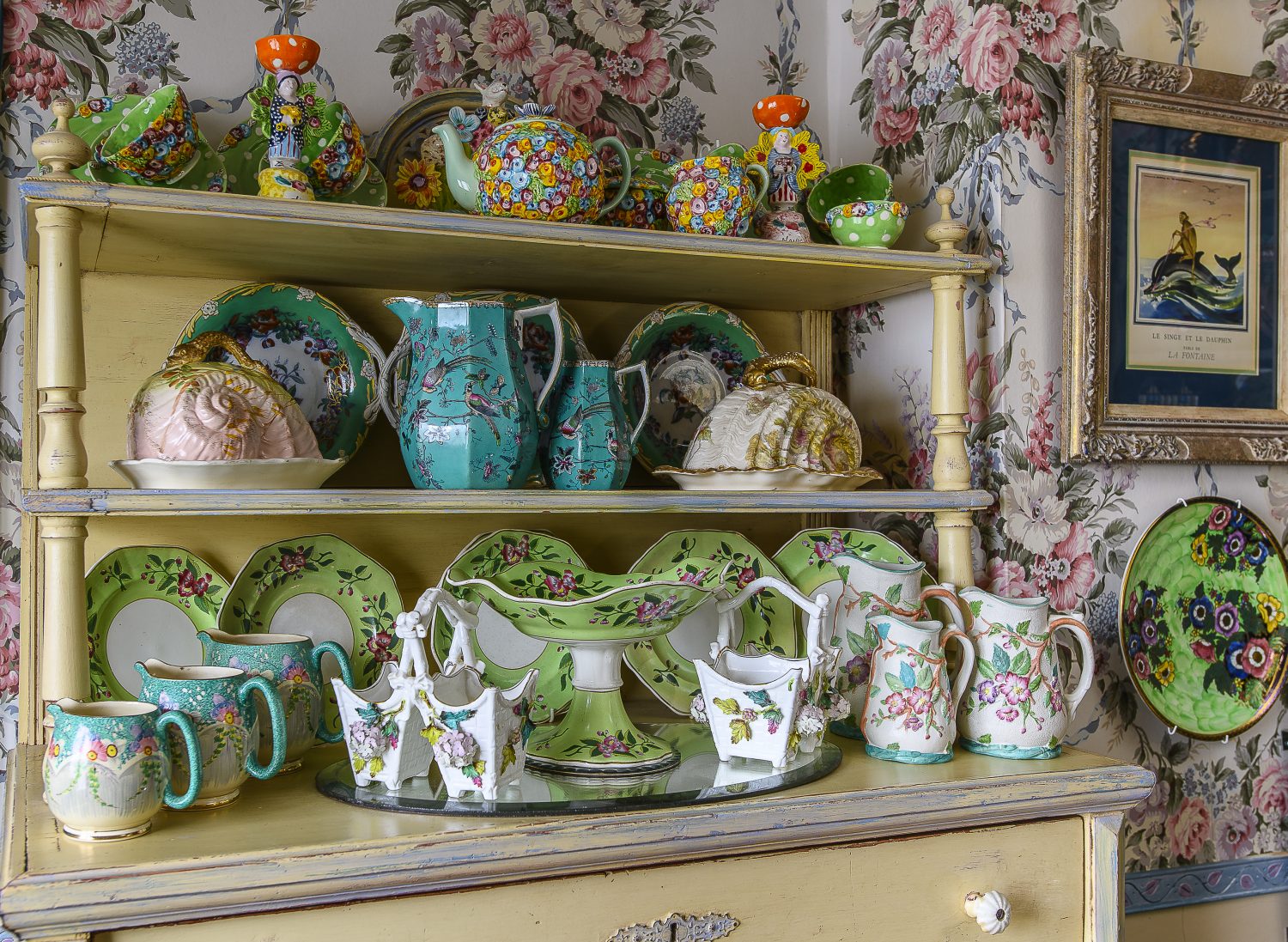
I drive straight past Louise and John’s house. I think I’m looking for a larger or more outlandish building. Turning around, I see that someone has come out from the front door of the unprepossessing row of houses that I’ve just passed. Louise Hamlin-Wright, in a billowing dress, like a colourful flag in this morning’s wind, is waving at me.
As she leads me inside to meet her husband John, friend Sue and miniature bull terriers Dorcas and Maxim, Louise explains that “all the treasures lie within”. I smile, and then gasp, not prepared for the kind of ‘within’ – and just how much treasure.
Once inside, the building expands out in all directions, like an interior explosion. You could say that this house is Tardis-like, but it’s more than that. The ordinary front door, that you might pass without a second glance, has become a portal into a Wonderland. One that stopped off at the V&A to load up with collectibles.
Louise and Sue lead me into the dining area, where in true Wonderland style, the table is set for tea, except that this is an exquisitely laid out table, bedecked with delicate china, tiny sandwiches and French fondant fancies (all the way from Betty’s of Harrogate, no less). There’s certainly no room for a dormouse in the slim, Art Deco Limoges teapot.
Before we venture around the interior, I sit at the tempting tea table and learn a little about Louise and John and the history of their house. It comes as no surprise to find that John and Louise were at art school in the Sixties, studying textiles at The Central School of Arts & Crafts (now known as Central St Martins) and then going on to teach at art schools, while developing their own printing process.
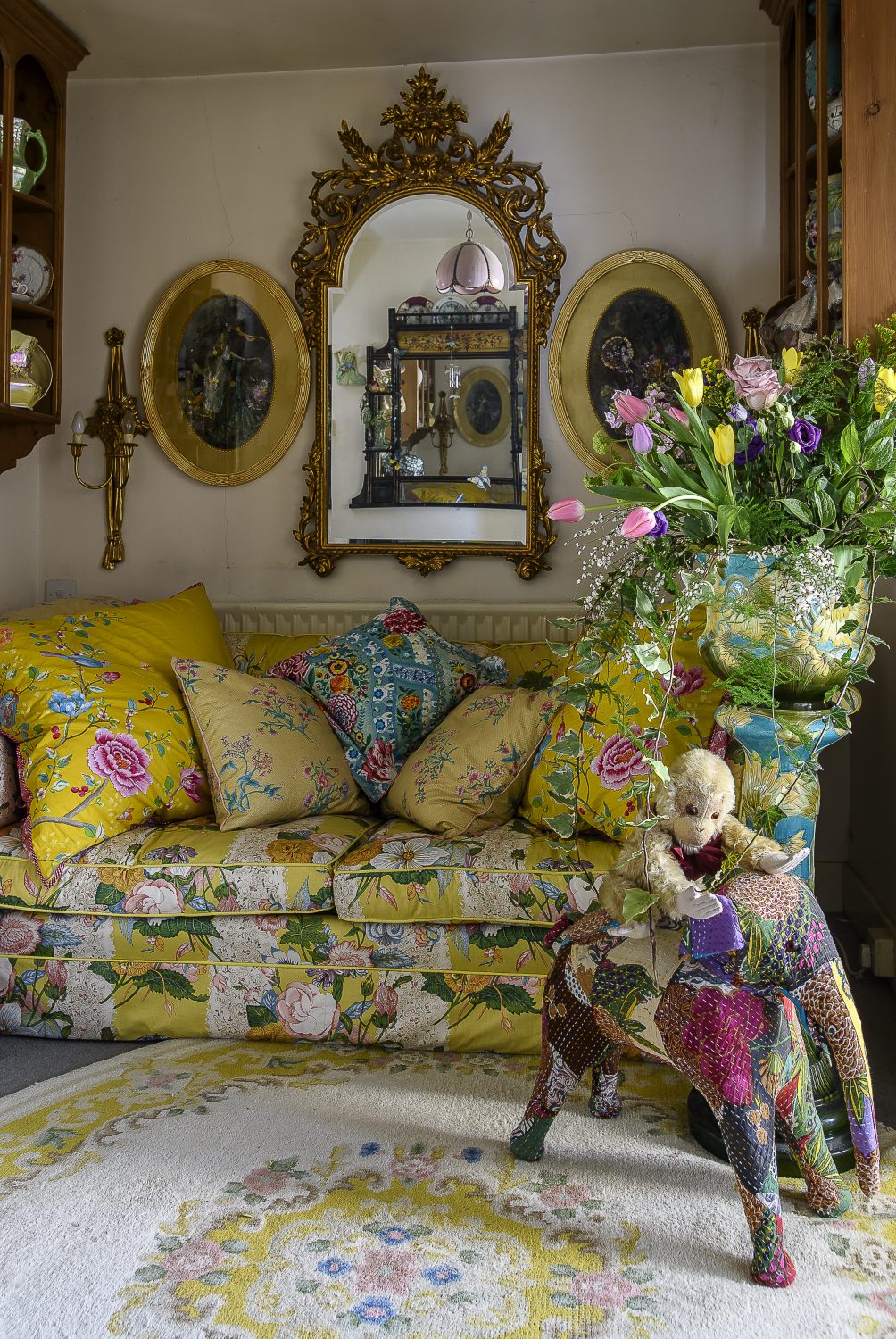
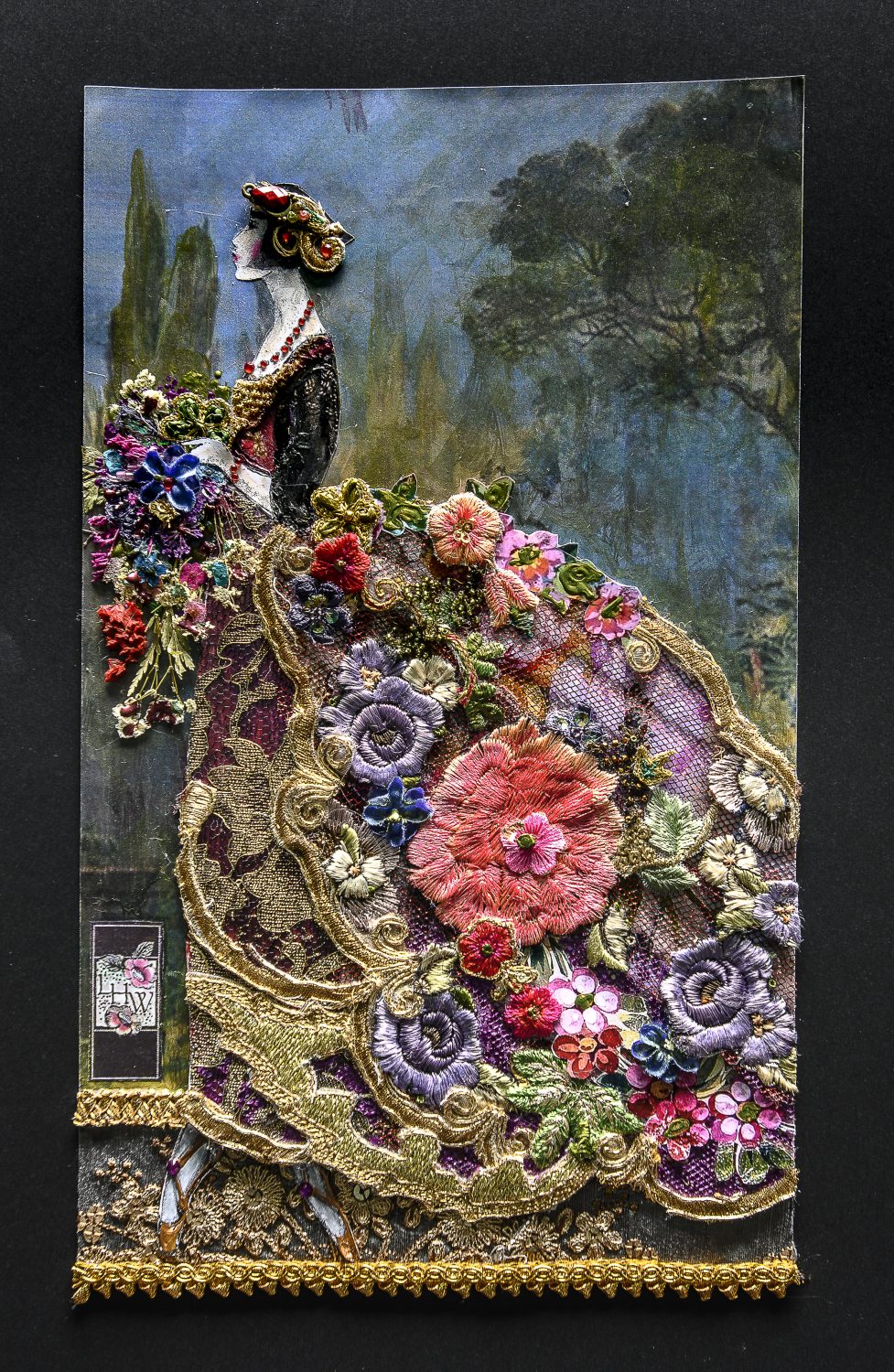
“We bought this house in 1970 with help from John’s father,” says Louise, referring to the original two up, two down modest cottage – which is how the building still appears from the outside. “It cost £7,000,” she smiles. That was in the early days when they were both still teaching. They were also printing fabric and, as word spread, the couple began printing for designers and fashion houses. Louise reels off a staggering list of names that they printed silk for – Christian Dior, Bruce Oldfield, Jean Muir, Hardy Amies, the Duchess of Argyll, to name but a few. They even did some private work for Elizabeth Taylor.
At the very beginning, once things had started to take off, they bought part of the field that lay behind the house, which meant that John was able to build a printing works on site. This also allowed them to build a large extension on the back of the property. “Then one day we had a front cover on The Sunday Times Magazine,” says Louise. Their silk printing business took off, but the process is labour intensive and the printing is done by hand.
“I nearly did myself serious damage printing silk,” Louise says, remembering the acres of fabric that had to be carefully laid out and handled, “so I started doing short lengths for wedding dresses.” This was an enormous undertaking too, but a lucrative one.
The work was done to a very high specification and these weren’t just any wedding dresses, but exquisite, one-off gowns that Louise sold to an exclusive market (Mandy Smith wore a Louise Hamlin-Wright dress when she married Bill Wyman). “We were making wedding dress after wedding dress. At one stage we had fifteen outworkers making dresses for us.”
They created both pigment printed and the more technically demanding dye printed silk in their print works. John worked out a method for incorporating crushed mother of pearl into the process, enabling them to create a unique finish to the fabric. Their hard work paid off and they have even had some of their material in the V&A Museum. Business boomed and each time a substantial sum was paid for some dresses, they were able to extend the house further.
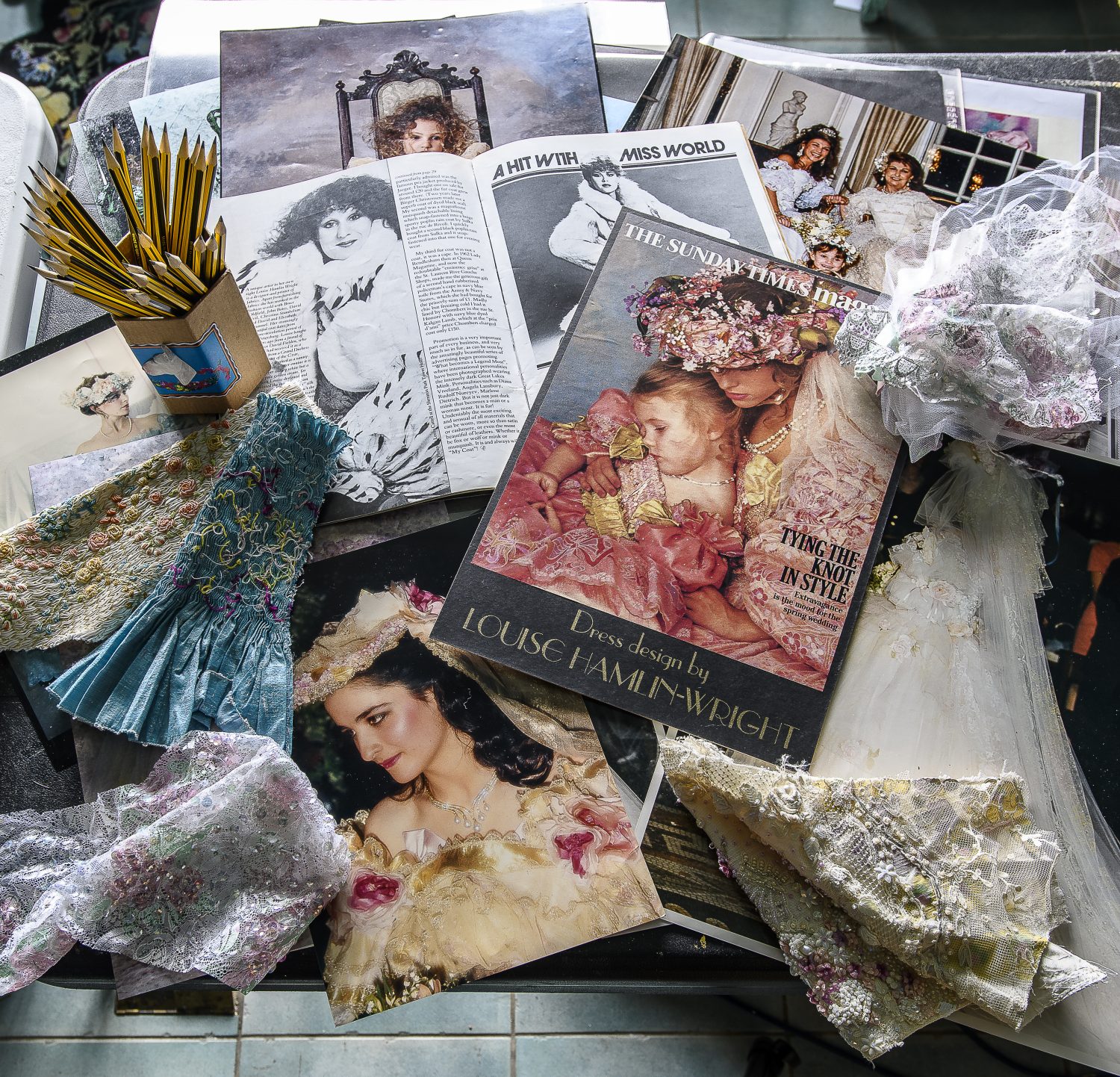
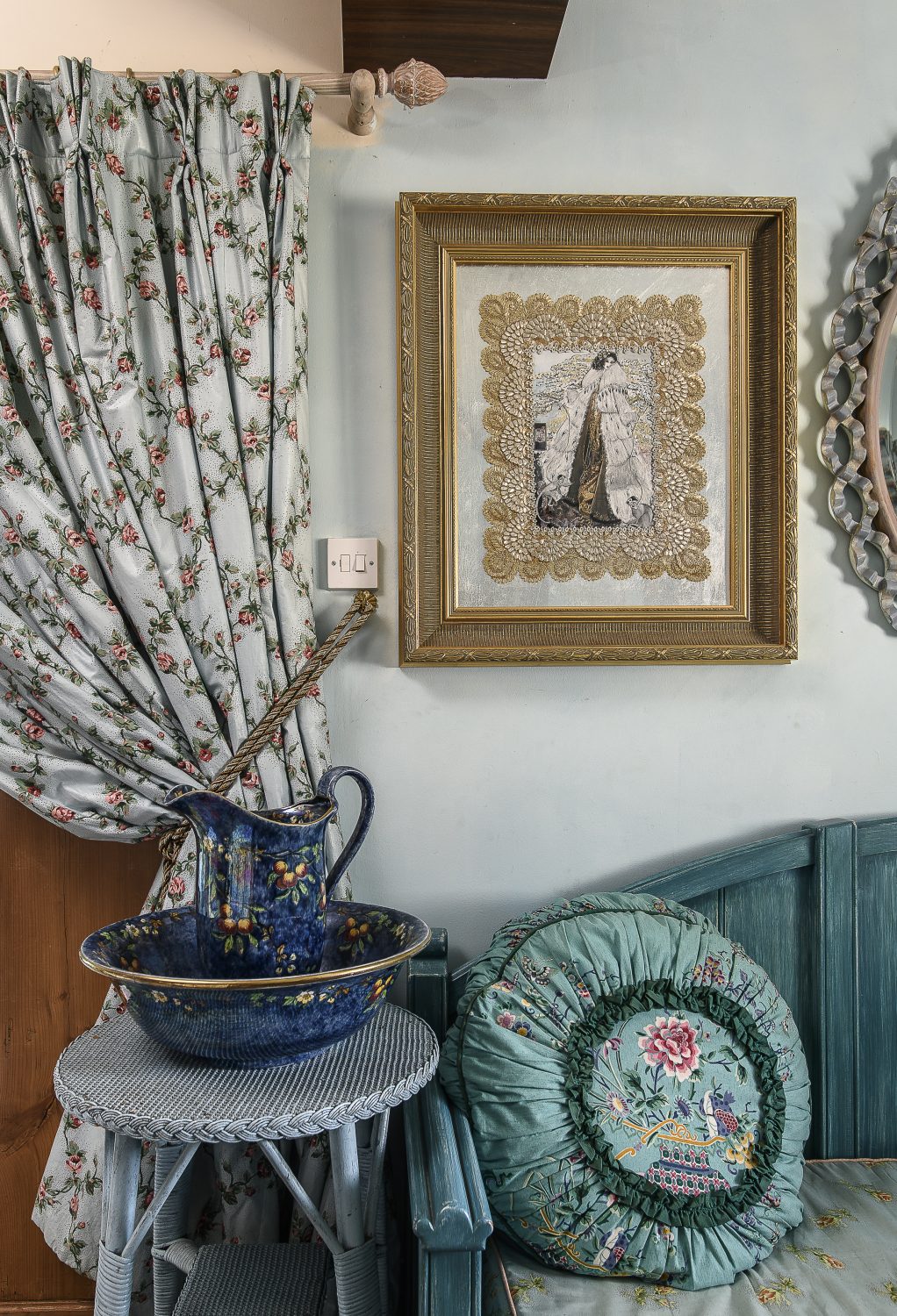
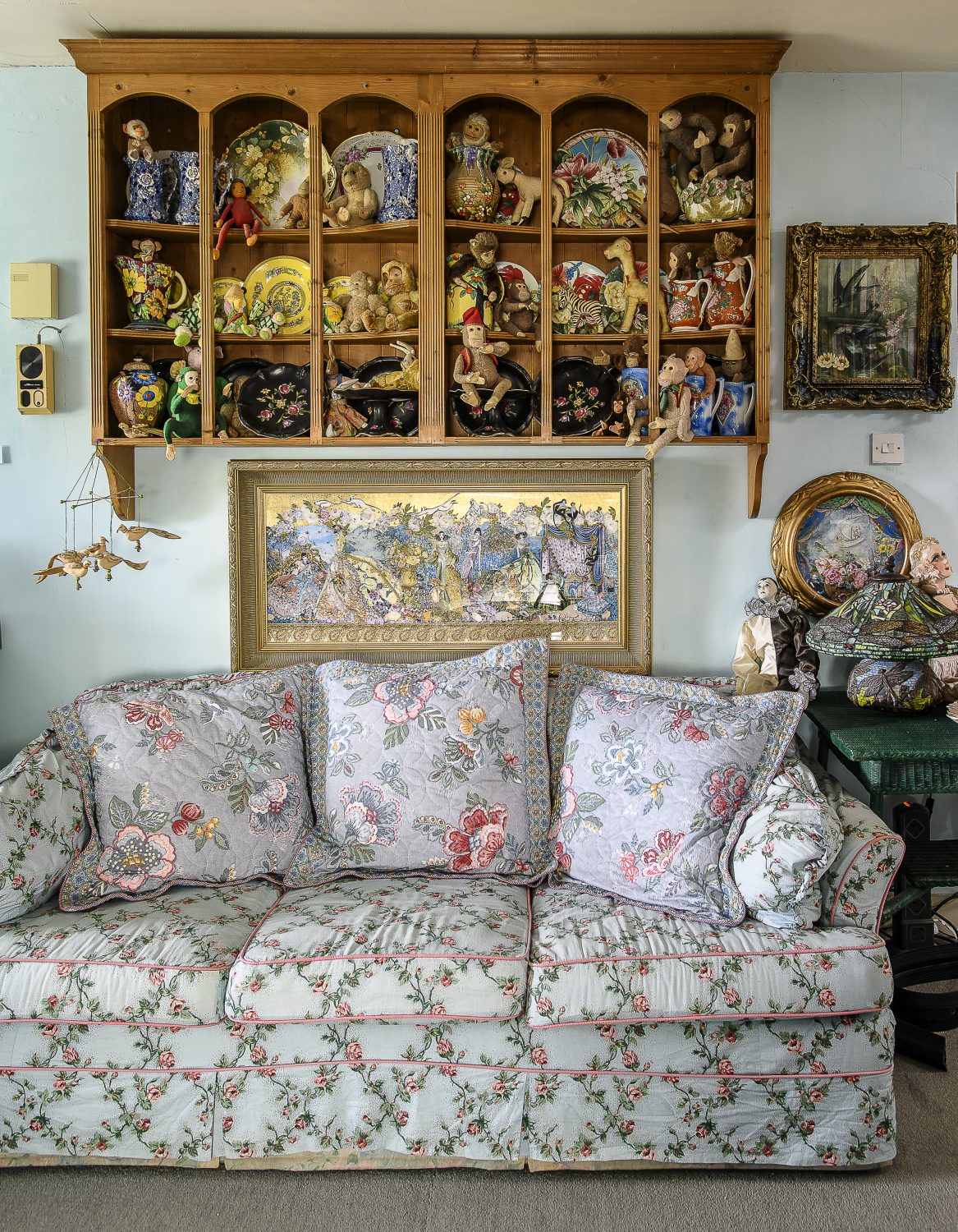
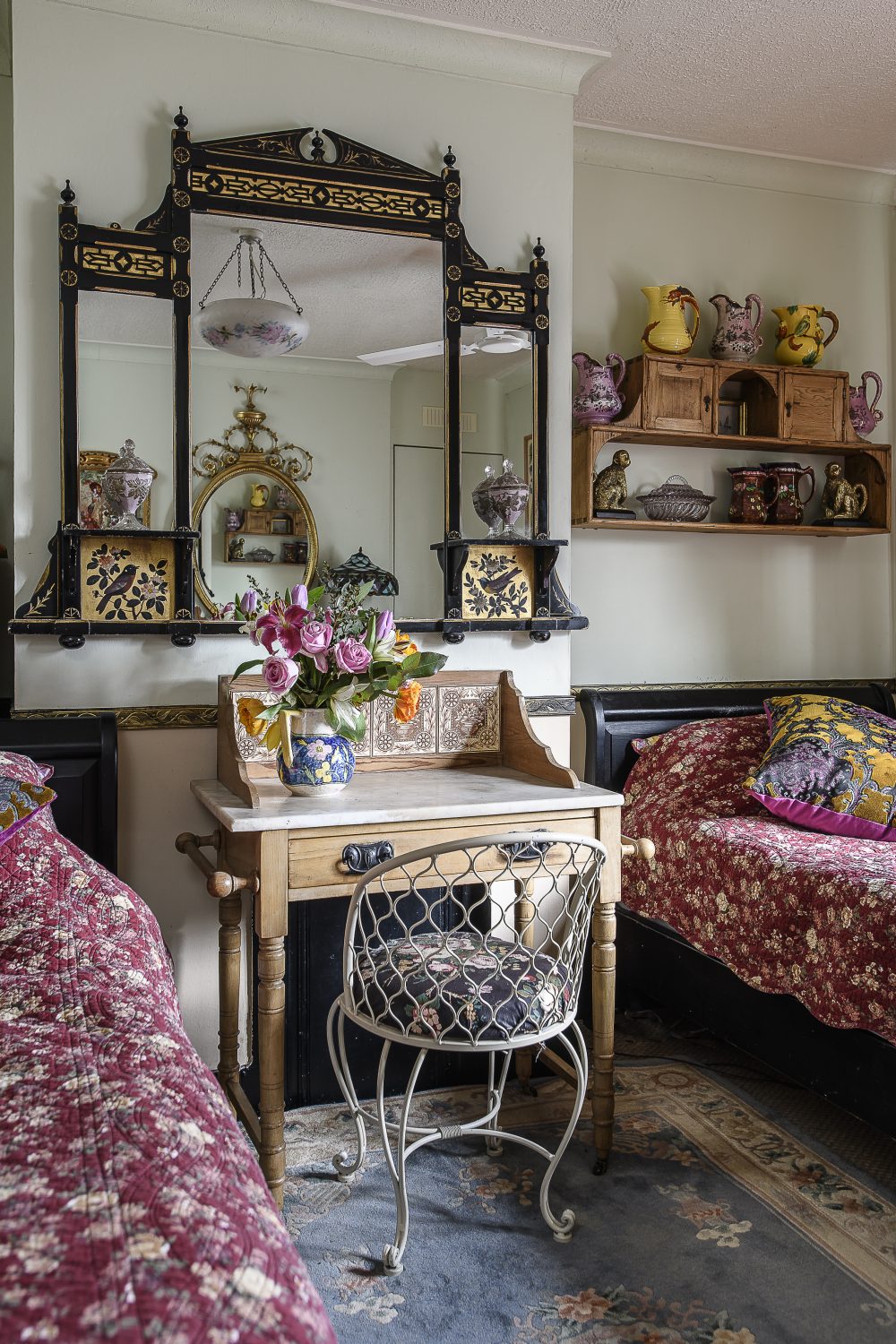
“Every Middle Eastern wedding paid for an extension,” remembers Louise. “Then the man next door sadly died whilst on a trip to Germany, so we bought his house too.” Before long the couple had expanded into a five-bedroomed, double-fronted house. “We even had a library at one point!” Louise was busier than ever, her catchphrase ‘say yes to the dress’ keeping her going while she travelled to New York and into London on a regular basis, working with people like the Emmanuels, Kleinfeld of New York, once even making a dress for every single window in Harrods, even branching out beyond the bridal to the next stage – babies’ cradles.
“And then suddenly everything was cancelled,” says Louise, describing how events surrounding the 9/11 terrorist attacks in America directly affected their business. “A lot of our clients were too frightened to come here. The market just dropped dead.”
Almost overnight their whole way of life changed, the print shed became obsolete and the couple had to think of another way to make a living. Ingeniously, they managed to put their now substantial house to good use. “We started to teach English to international students,” Louise explains. They began to provide accommodation and language lessons, mainly to Chinese students. It was very successful. “At one point we had ten students in the house – and had to do two sittings for meals. It was great fun and many of them still come for holidays.” Sadly, since the pandemic, there have been fewer opportunities for student travel from China. Not one to be easily thwarted, Louise has turned her talents back to something she has always enjoyed – painting. Her artworks, just like the silks and dresses she made, are quite beautiful. Each one is a minute tapestry of exquisite texture and detail – silk, lace, pearls and delicately applied paint.
Louise’s painterly and pattern making skills can be seen all over their home – the walls in nearly every room have become like canvases themselves, nearly every surface is covered in an array of fine china, print, fabric and paint. In lesser hands, the results could be disastrous, but Louise has carefully blended colours and textures into a fabulous coherence. There is no need to ask what colour the walls are painted in this house, because, as Louise says – “you can’t get to the walls.”
It is upstairs where the Tardis effect is most noticeable. As we go up the steep narrow staircase of the original cottage, the landing opens out dramatically into a sort of huge drawing room. This area becomes the central point of the second storey, with small sitting rooms, bedrooms and bathrooms leading off in various directions. Clever use of mirrors adds to the effect and makes the space seem even larger.
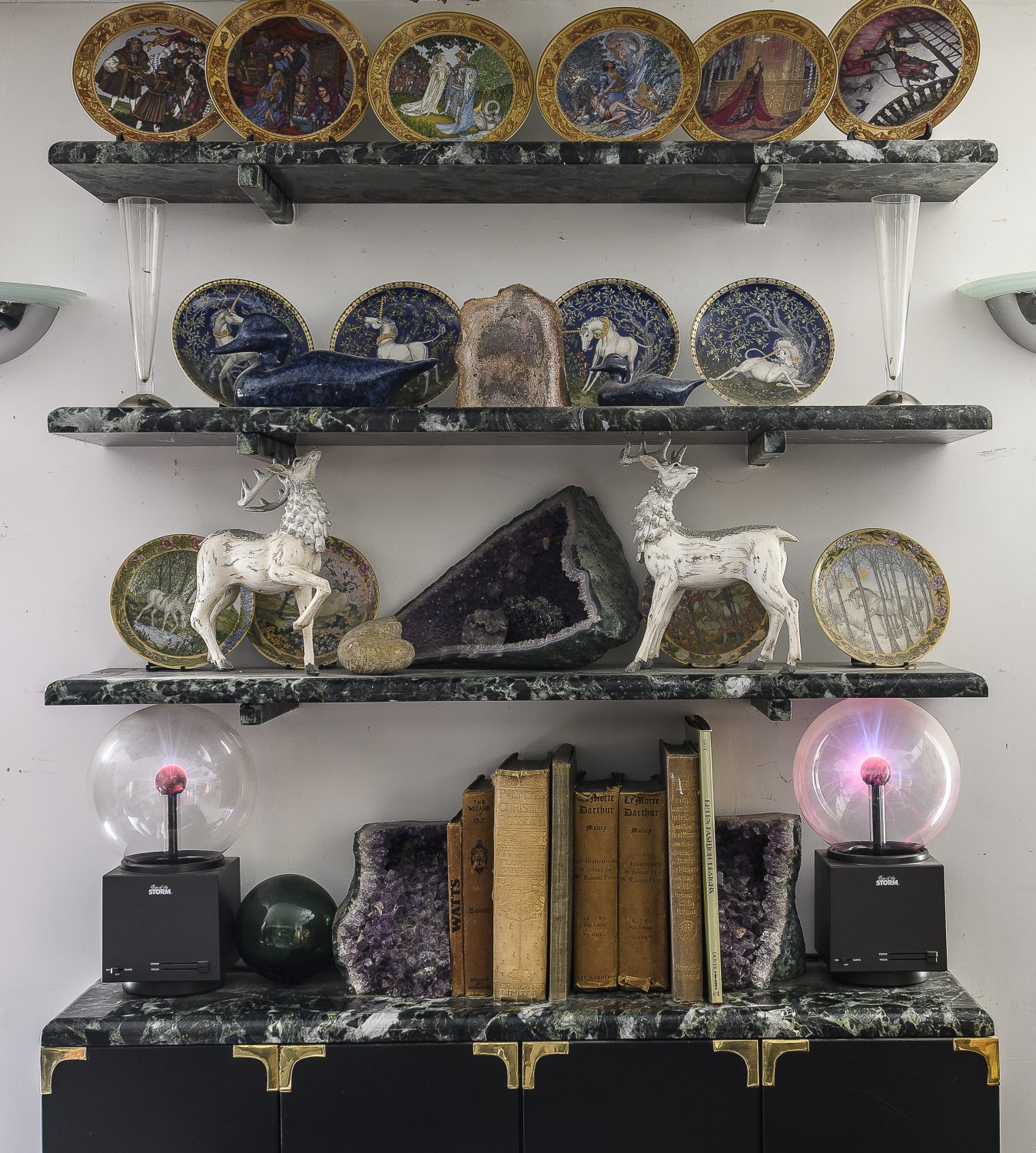
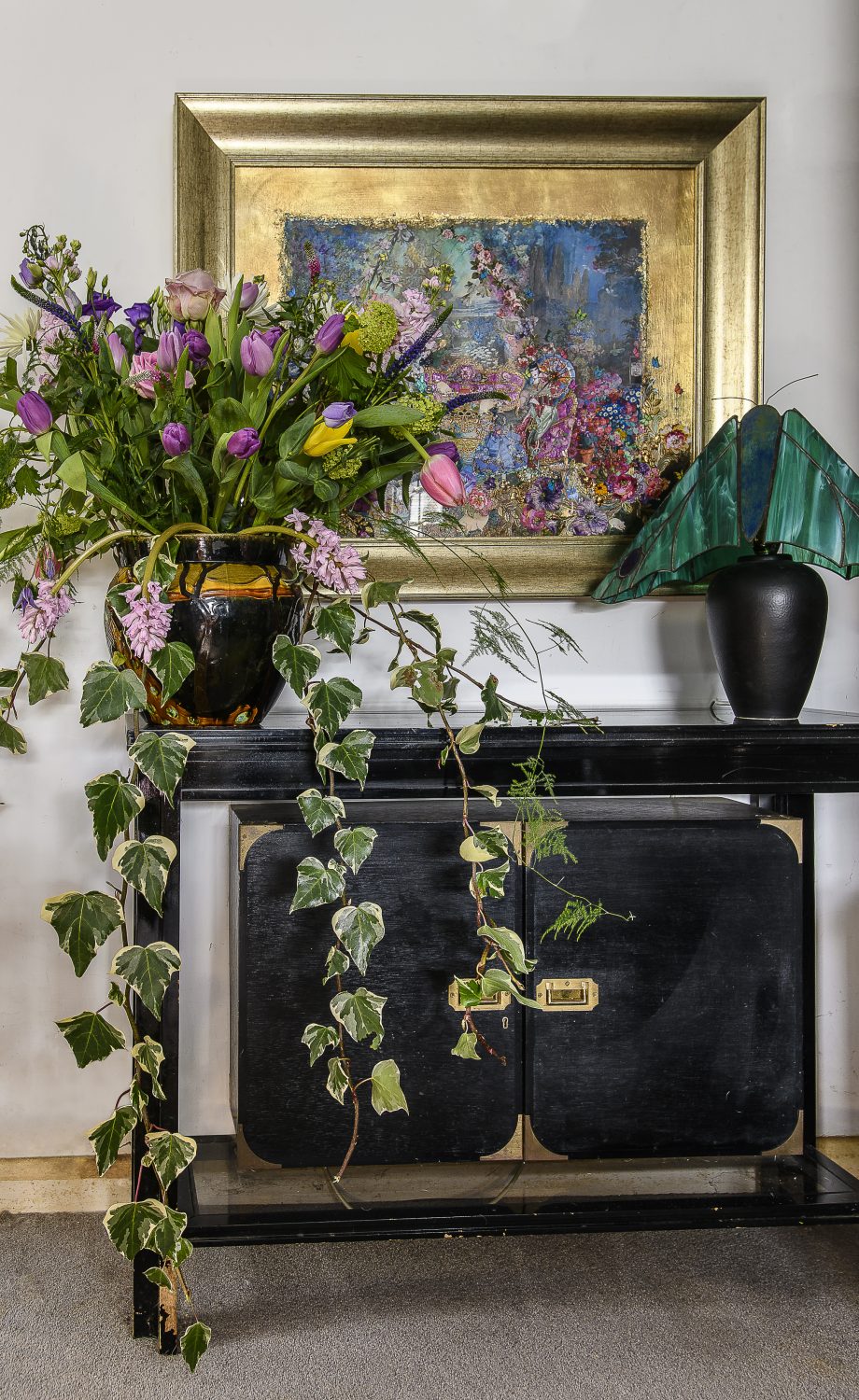
Sue’s fantastic flower arrangements, placed on elegant jardinieres, enhance the overall look, with the colours of fabrics on the sofas and cushions carefully picked out and translated into flower form.
Collections of exquisite china swim before my eyes in every room – jugs, teapots, plates and cups sing out from the walls, artfully arranged on bespoke shelves. Some, like the cleverly recessed units in one of the smaller bedrooms, have been made by John, who has added carpentry to his many skills.
Much of the furniture has been handmade too, designed by John, but made by a cabinetmaker called Merlin – and painted in dazzling turquoise. Louise points to a chaise longue, which magically pulls out into a full sized bed.
At the back of the house is a double width room, its large windows looking out over the fields and filling it with light, making this an ideal studio for Louise. Some of her work is on view in here, together with magazine covers and articles showing a few of her many bridal collections.
Louise’s more recent works – the intricate collages often featuring girls in fabulous appliquéd ball gowns, beaded and bejewelled in finery, many set into gilded backgrounds and mounted within golden frames, can be spotted all around the house, bringing another rich layer to walls that are already splendidly crowded.
As we duck past an ornate chandelier – padded at the base “so that tall people don’t bump their heads,” it’s clear that Louise is an avid collector with eclectic tastes. Perched around and in front of some of the shelves are vintage toys. One cabinet is alive with tiny toy monkeys. “I love monkeys,” she says, but maybe not quite as much as she loves her bull terriers. These have been immortalised in one form or another throughout the interior.
There is one room that doesn’t fit the overriding theme though – and that is the large ground floor room at the back of the house in the first extension that the couple built. This expansive space is John’s domain. A counterpoint to Louise’s feminine and colourful tastes, it is predominantly monochrome.
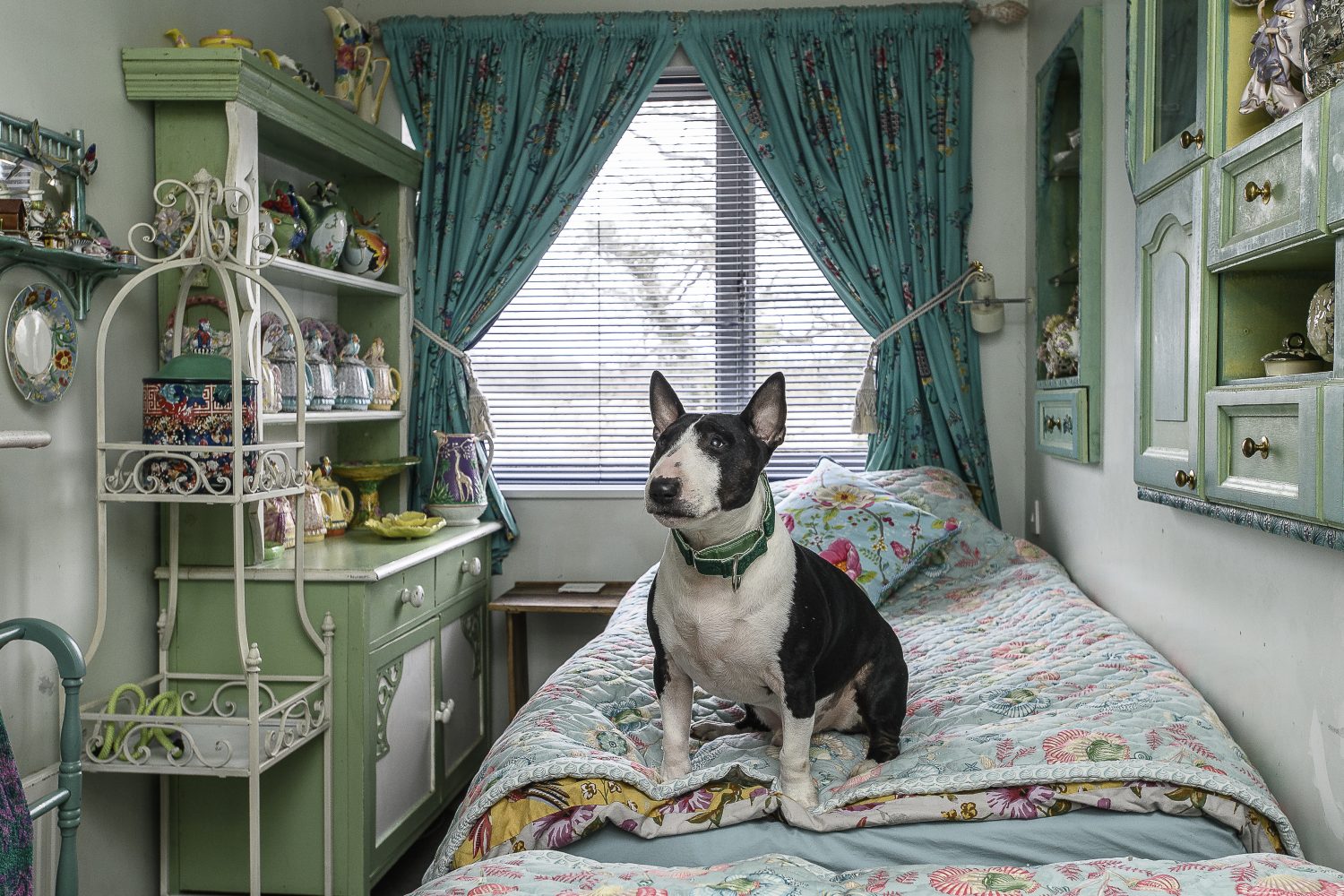
“I would have it full of chintz,” Louise chuckles, but “John likes black and plastic.” The furniture is masculine and chunky, but this space has also been designed from an acoustic point of view. John has even constructed some huge speakers to provide surround sound for his impressive sound system.
There has been a small invasion into this area – a single chair is covered in leopard print, and artworks are now lining the walls, mainly in sculptural form – some commissioned and made by the sculptor Marie Prett, many in celebration of the dogs they have owned.
Back in the kitchen (and please excuse me, I did have to give into temptation and eat a fondant fancy), Louise points at the old Victorian meat plate that started her extensive collection of china, explaining that she has even used the design as inspiration for one of her own, and that she is always looking at colour and pattern.
Inspiration comes in many forms and it’s clear that there is no shortage of objects to choose from here. This home is packed to the rafters with a wealth of amazing collections and beautiful treasures, each one a reflection of their charming and characterful owner, the magnificently inspirational Louise Hamlin–Wright.
Address Book:
Louise can be contacted about her artworks on 07973 162473 or see her Etsy store etsy.com/uk/shop/LouiseHamlinWright
Sue Exell (floral arrangements) 01233 840385
Ceramicist Francesca Kaye francescakaye.com
Ceramicist Marie Prett marieprettceramics.com
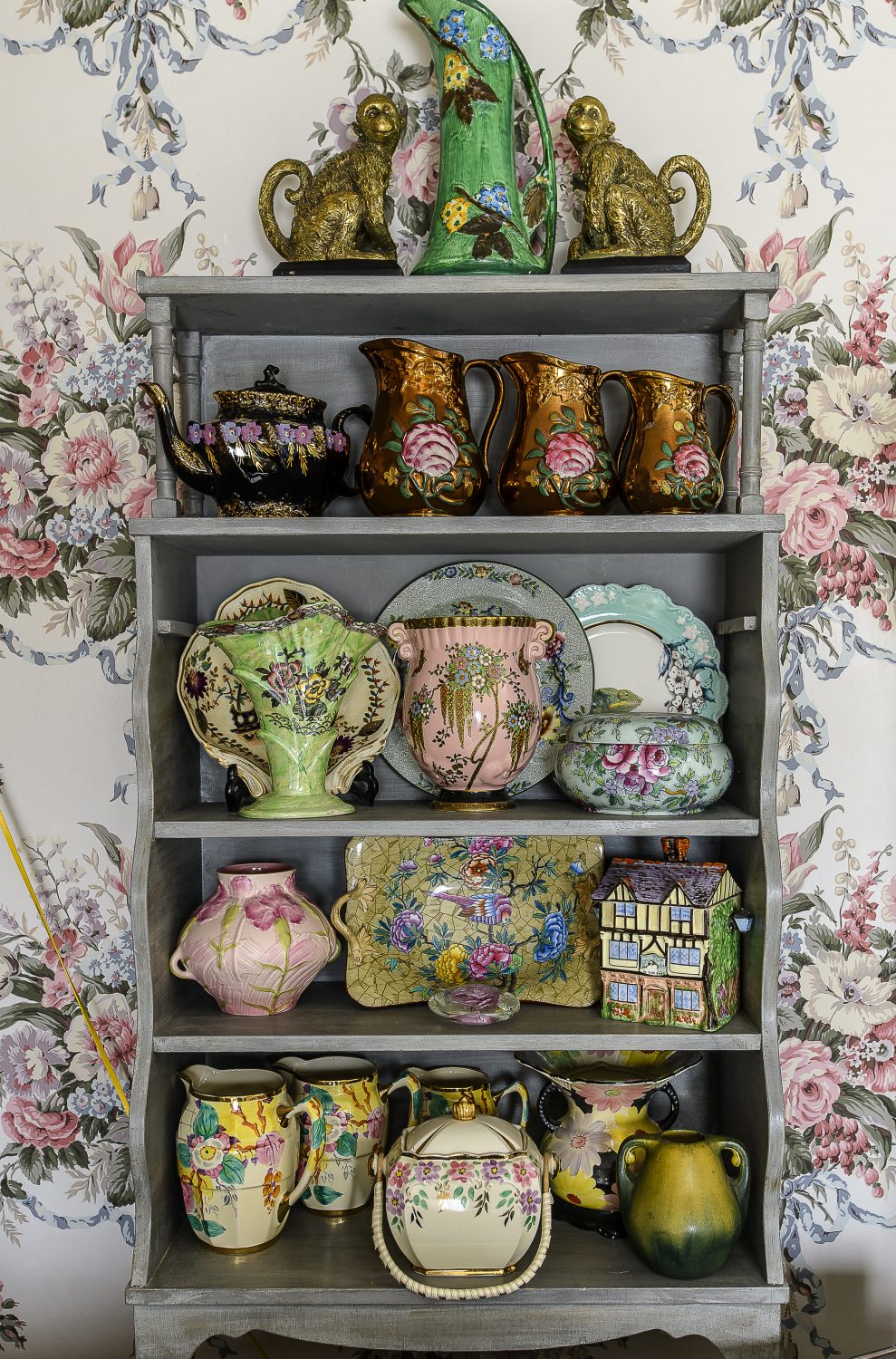
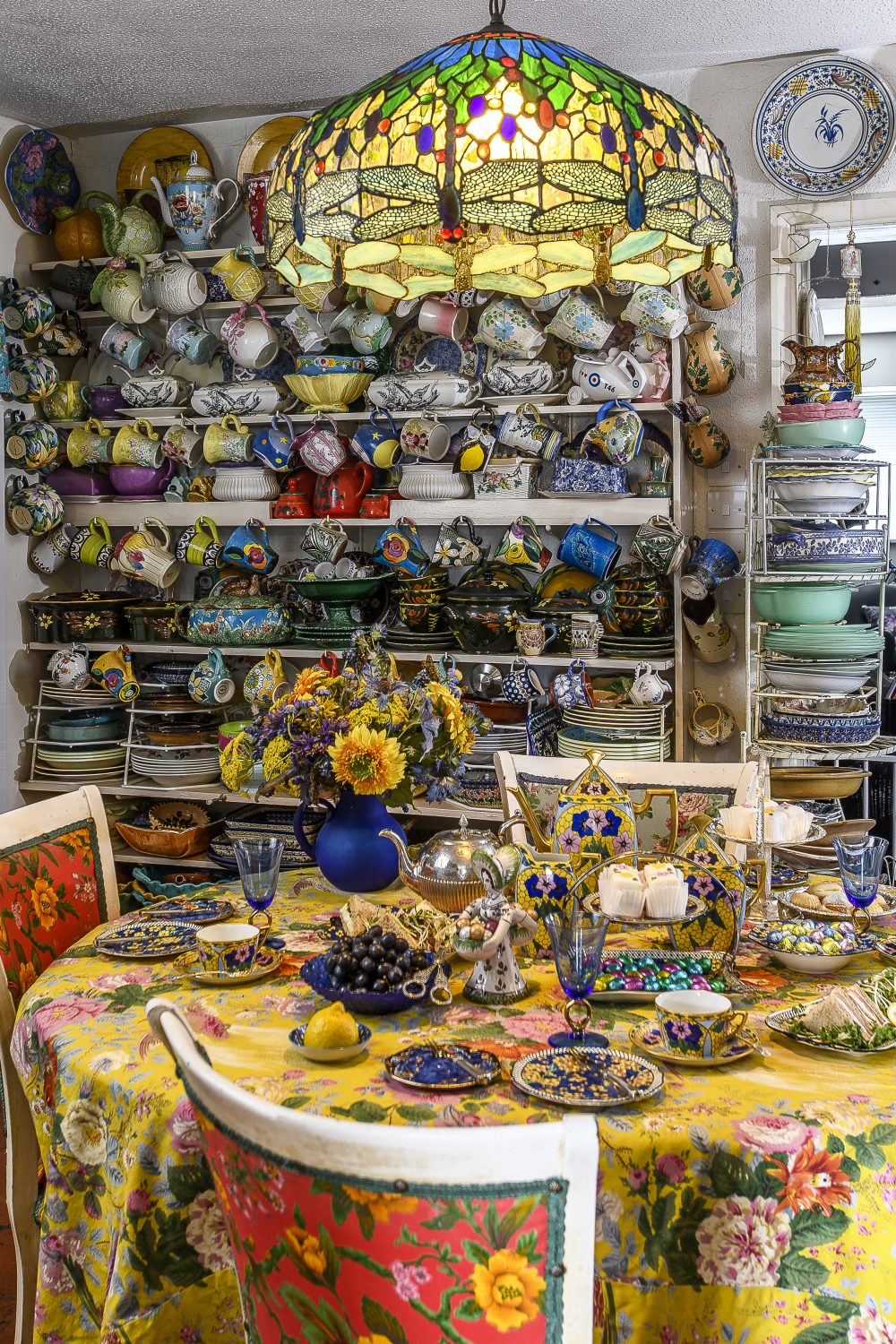
Words: Jo Arnell Photographs: David Merewether
You may also like
Change it up
Neil and Sharon Maidment’s reconfigured family home is the result of a very successful partnership with OPEN architecture, who opened their eyes to a new layout they never imagined was possible Words: Fiona Patrick Photographs: David Merewether The green modular...
Building Connections
After nearly a decade of planning, Dominic and Eve were finally given permission to convert a pair of derelict barns, linking them together to create one very beautiful dwelling Words: Jo Arnell Photographs: David Merewether The story arc of an...
Cut to Fit
Deborah Harrison downsized to a three bedroom house, which she renovated and reconfigured, reinstating the original Victorian features and editing family heirlooms to suit her new home and lifestyle “As William Morris says, ‘Everything has to be beautiful or useful,’”...
